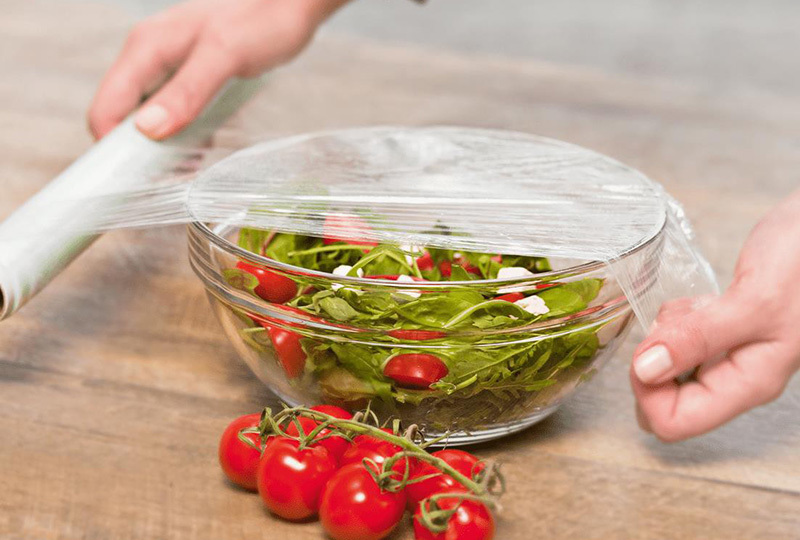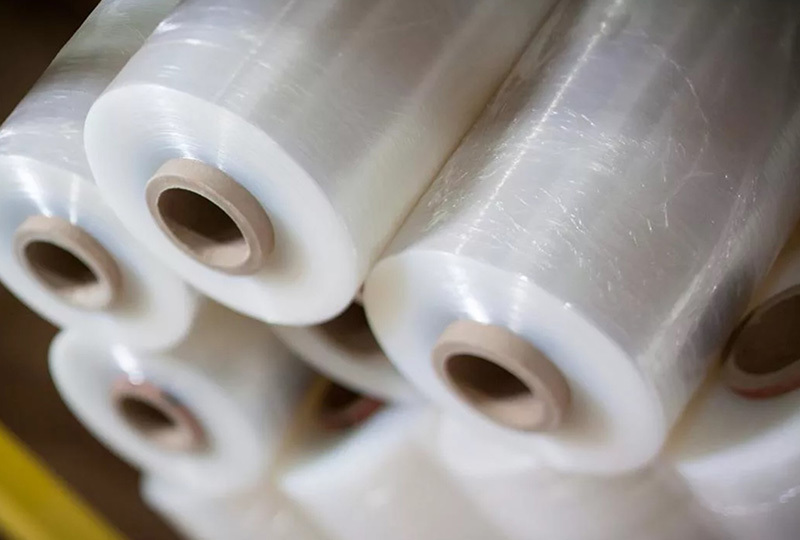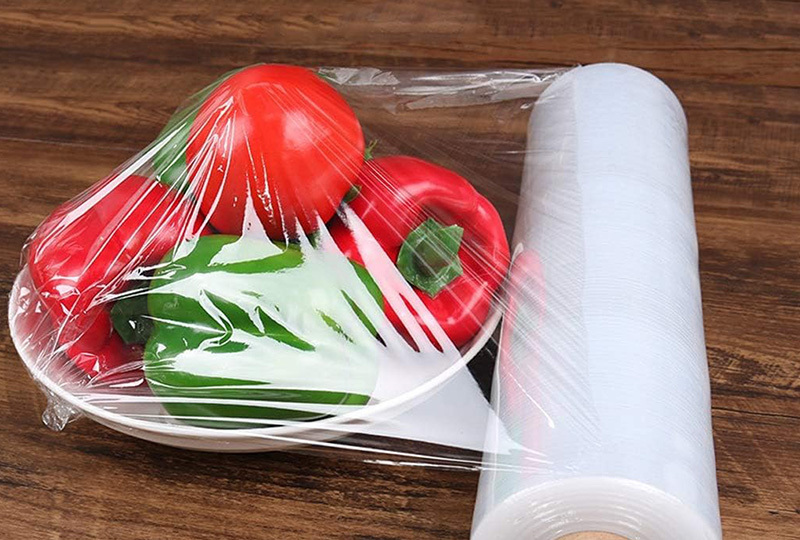Sustainable Kitchen Solutions: The Rise of Bio-Based Cling Film
Release time:
Apr 23,2025
Sustainable Kitchen Solutions: The Rise of Bio-Based Cling Film Introduction to Bio-Based Cling Film In recent years, the push for sustainability has transformed various industries, and the kitchen supplies sector is no exception. One of the most notable innovations is the introduction of **bio-based cling film**, a product developed to reduce our reliance on traditional plastic wrap. Not only
Sustainable Kitchen Solutions: The Rise of Bio-Based Cling Film
Introduction to Bio-Based Cling Film
In recent years, the push for sustainability has transformed various industries, and the kitchen supplies sector is no exception. One of the most notable innovations is the introduction of **bio-based cling film**, a product developed to reduce our reliance on traditional plastic wrap. Not only does this alternative help preserve food, but it also significantly minimizes environmental impact. This article delves into the many aspects of bio-based cling film, highlighting its benefits, production processes, and its role in promoting sustainable kitchen practices.
Understanding Bio-Based Cling Film
What is Bio-Based Cling Film?
Bio-based cling film is a type of food wrap made from renewable resources such as plant-based materials. Unlike conventional plastic cling film, which is derived from petroleum, bio-based options utilize sources like cornstarch, sugarcane, or other biodegradable materials. This makes them a more sustainable choice, as they can decompose naturally over time, reducing landfill waste and contributing to a healthier environment.
Why Bio-Based Cling Film Matters
The importance of bio-based cling film lies in its potential to address two critical issues: plastic pollution and food preservation. Traditional plastic wrap is often single-use and ends up in landfills or oceans, where it takes hundreds of years to break down. In contrast, bio-based cling film not only provides an effective barrier against air and moisture but also biodegrades more quickly, leaving a smaller environmental footprint. By opting for this eco-friendly solution, consumers can contribute to a circular economy and promote sustainable practices within their kitchens.
Benefits of Using Bio-Based Cling Film
1. Environmentally Friendly
One of the most compelling reasons to switch to bio-based cling film is its positive impact on the environment. The production and disposal of traditional plastic wraps contribute significantly to global plastic pollution. Bio-based cling films, being derived from renewable resources, help reduce dependence on fossil fuels and minimize the carbon footprint associated with food packaging.
2. Safe for Food Storage
Bio-based cling films are designed to be safe for food contact, ensuring that your meals remain fresh without the risk of harmful chemicals leaching into your food. Many brands comply with safety standards and regulations for food packaging, making them a reliable choice for everyday kitchen use.
3. Versatility and Functionality
Just like traditional cling film, bio-based options provide excellent stretchability and cling, making them ideal for wrapping sandwiches, covering leftovers, and storing fresh produce. They can handle various temperatures, allowing for use in refrigeration and freezing, ensuring your food stays fresh for longer.
4. Biodegradability
Bio-based cling films can decompose naturally in commercial composting facilities, and some are even suitable for home composting. This characteristic significantly reduces landfill waste and aligns with the growing trend of composting organic materials in households, enhancing overall sustainability efforts.
Production of Bio-Based Cling Film
Raw Materials Used in Production
The production of bio-based cling film typically involves renewable resources such as:
- **Cornstarch**: A primary ingredient that serves as a biodegradable polymer.
- **Sugarcane**: Used to produce bioplastics, sugarcane is a fast-growing crop that absorbs carbon dioxide while growing, contributing positively to the environment.
- **Cellulose**: Derived from plant cell walls, cellulose is a natural polymer that can be processed into bio-based films.
Manufacturing Process Explained
The manufacturing process of bio-based cling film generally includes:
1. **Harvesting Raw Materials**: Sustainable farming practices are essential to ensure that the raw materials used are renewable and responsibly sourced.
2. **Conversion to Bioplastics**: The raw materials undergo conversion processes, such as fermentation or extrusion, which transform them into usable bioplastic resins.
3. **Film Production**: The bioplastic resins are then melted and formed into thin sheets through casting or blowing techniques.
4. **Cutting and Packaging**: Finally, the cling film is cut to size, packaged, and made ready for distribution.
Comparing Bio-Based Cling Film to Traditional Plastic Wrap
Environmental Impact
When comparing the environmental impact of bio-based cling film and traditional plastic wrap, the differences are stark. Traditional cling films contribute to pollution and take centuries to decompose, whereas bio-based cling films can break down in a matter of months in appropriate conditions.
Cost Considerations
While bio-based cling films may have a higher upfront cost compared to conventional plastic wraps, the long-term environmental benefits and the growing demand for sustainable products are likely to drive prices down as technology and production methods improve.
Consumer Awareness and Acceptance
Consumer awareness surrounding plastic pollution and environmental issues is at an all-time high. This increasing consciousness has led to a growing acceptance of bio-based cling films as a viable alternative, with more brands entering the market and offering eco-friendly products.
The Future of Food Packaging: Trends and Innovations
Innovative Technologies in Production
As the demand for sustainable products rises, companies are investing in innovative technologies to enhance the production of bio-based cling films. Research is focused on improving the strength and flexibility of these films, making them even more competitive with traditional options.
Regulatory Support for Sustainable Practices
Governments around the world are beginning to support sustainable practices through regulations and incentives. This regulatory backing is likely to accelerate the adoption of bio-based cling films and other eco-friendly kitchen solutions.
Consumer Education Initiatives
Educating consumers about the benefits of bio-based cling film is crucial for its adoption. Many brands are taking proactive steps to inform customers about the environmental advantages and proper disposal methods for these products.
Frequently Asked Questions (FAQs)
1. Is bio-based cling film safe for food storage?
Yes, bio-based cling films are designed to be safe for food contact and comply with food safety regulations.
2. How long does bio-based cling film take to decompose?
Bio-based cling films can decompose in a matter of months under the right composting conditions.
3. Can I use bio-based cling film in the freezer?
Yes, bio-based cling films can be used in the freezer, providing a protective barrier against air and moisture.
4. Are bio-based cling films more expensive than conventional wraps?
Generally, bio-based cling films may be slightly more expensive, but prices are expected to decrease with increased production and demand.
5. Where can I purchase bio-based cling film?
Bio-based cling films are available in many health food stores, online retailers, and supermarkets that offer eco-friendly products.
Conclusion
The shift towards **sustainable kitchen solutions** is more than just a trend; it reflects a growing commitment to environmental responsibility. Bio-based cling film stands at the forefront of this movement, offering a practical and eco-friendly alternative to traditional plastic wrap. By embracing this innovative product, we not only enhance our kitchen practices but also contribute to a healthier planet. As technology continues to evolve, the future of food packaging looks promising, and with collective awareness and action, we can pave the way for a more sustainable lifestyle.
Related News
What are the characteristics of PVC fresh-keeping film for food preservation
Can PVC plastic wrap be heated in a microwave oven?
What is the difference between PVC cling film and PE cling film
The choice of PVC cling film need to pay attention to what






